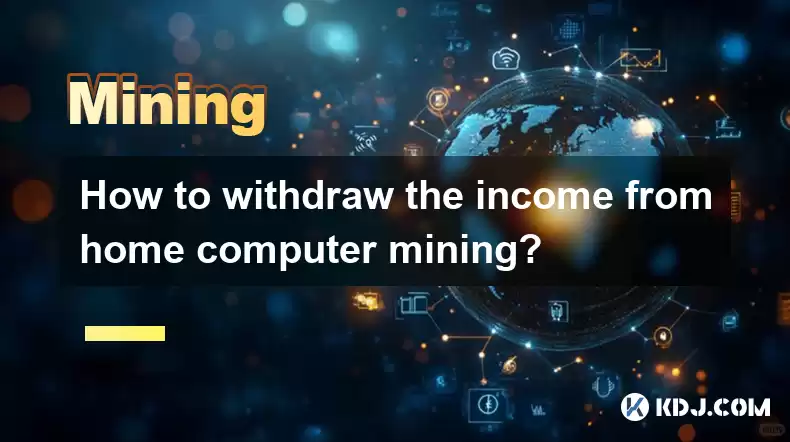-
 Bitcoin
Bitcoin $115100
1.27% -
 Ethereum
Ethereum $3675
2.71% -
 XRP
XRP $2.995
1.45% -
 Tether USDt
Tether USDt $1.000
0.02% -
 BNB
BNB $769.8
2.64% -
 Solana
Solana $168.0
3.25% -
 USDC
USDC $0.9999
-0.01% -
 TRON
TRON $0.3371
1.48% -
 Dogecoin
Dogecoin $0.2051
3.36% -
 Cardano
Cardano $0.7394
2.30% -
 Hyperliquid
Hyperliquid $38.15
0.42% -
 Stellar
Stellar $0.3966
-0.36% -
 Sui
Sui $3.486
2.93% -
 Chainlink
Chainlink $16.72
2.52% -
 Bitcoin Cash
Bitcoin Cash $568.0
4.36% -
 Hedera
Hedera $0.2440
2.59% -
 Ethena USDe
Ethena USDe $1.001
0.04% -
 Avalanche
Avalanche $22.16
2.06% -
 Litecoin
Litecoin $119.1
-0.73% -
 UNUS SED LEO
UNUS SED LEO $8.991
0.04% -
 Toncoin
Toncoin $3.232
-0.39% -
 Shiba Inu
Shiba Inu $0.00001233
2.82% -
 Uniswap
Uniswap $9.717
2.53% -
 Polkadot
Polkadot $3.664
1.85% -
 Dai
Dai $1.000
0.01% -
 Monero
Monero $281.2
-3.89% -
 Bitget Token
Bitget Token $4.350
1.55% -
 Cronos
Cronos $0.1428
5.07% -
 Pepe
Pepe $0.00001050
3.68% -
 Aave
Aave $262.3
3.54%
How to withdraw the income from home computer mining?
Home computer mining withdrawal involves transferring mined cryptocurrency from your software wallet to an exchange, selling it for fiat currency, and then withdrawing to your bank account; the process varies by cryptocurrency and exchange, with fees and processing times impacting profitability.
Mar 24, 2025 at 02:56 pm

How to Withdraw the Income from Home Computer Mining?
Home computer mining, while offering the allure of earning cryptocurrency, presents unique challenges regarding withdrawal. The process differs significantly based on the cryptocurrency mined, the mining software used, and the exchange you intend to use. This article details the various steps involved and addresses common concerns.
First, you need to understand that the amount you earn from home computer mining is often relatively small, especially with the increasing difficulty of mining many popular cryptocurrencies. The profitability heavily depends on your hardware's hash rate, electricity costs, and the current cryptocurrency price. Therefore, managing expectations is crucial.
Understanding Your Mining Software and Wallet:
Most mining software integrates directly with a cryptocurrency wallet. This wallet holds your mined coins. Popular choices include software wallets like Electrum for Bitcoin or specific wallets for altcoins like Ethereum or Litecoin. It's essential to choose a wallet compatible with the cryptocurrency you're mining. Security is paramount; choose a reputable wallet and protect your private keys diligently.
- Check your mining software: Locate the balance section within your mining software. This displays the accumulated cryptocurrency you've mined.
- Confirm your wallet address: Ensure your mining software is correctly configured to send mined coins to your designated wallet address. Incorrect addresses will lead to irretrievable loss of funds.
Exchanging Your Mined Cryptocurrency:
Once you've accumulated a sufficient amount of cryptocurrency in your wallet, you'll need to exchange it for fiat currency (like USD, EUR, etc.). This involves using a cryptocurrency exchange. Popular choices include Coinbase, Kraken, Binance, and many others. Each exchange has its own fee structure, so comparing them is recommended.
- Create an account on a cryptocurrency exchange: This typically involves providing personal information and verifying your identity.
- Deposit your cryptocurrency: Transfer your mined cryptocurrency from your mining wallet to your exchange account. Note that transfer fees apply, varying depending on the network and exchange.
- Sell your cryptocurrency: Once deposited, sell your cryptocurrency for fiat currency. The exchange rate fluctuates constantly, so be aware of potential price changes.
- Withdraw your fiat currency: After selling, you can withdraw your funds to your bank account. This usually takes a few business days, depending on the exchange's processing time and your bank.
Addressing Specific Cryptocurrency Withdrawal Methods:
The specific withdrawal process varies slightly depending on the cryptocurrency. For example, withdrawing Bitcoin usually involves transferring it to an exchange, selling it, and then withdrawing fiat. With Ethereum, the process is similar. However, some altcoins may have less liquidity on exchanges, potentially making the process more complicated or resulting in higher fees.
Always thoroughly research the exchange you're using before transferring any cryptocurrency. Be wary of scams and ensure the exchange is reputable and secure.
Security Considerations:
Security is paramount throughout this process. Never share your private keys with anyone. Use strong, unique passwords for all your accounts. Enable two-factor authentication (2FA) wherever possible. Be cautious of phishing scams and only use official websites and software.
- Regularly backup your wallet: This ensures you can recover your cryptocurrency if your computer is damaged or lost.
- Use a hardware wallet: For larger amounts of cryptocurrency, consider using a hardware wallet, which provides an extra layer of security by storing your private keys offline.
Frequently Asked Questions:
Q: What is the minimum amount I can withdraw?
A: The minimum withdrawal amount varies significantly depending on the cryptocurrency exchange and the specific cryptocurrency. Some exchanges may have minimum withdrawal limits for fiat currency as well. Check the exchange's website for details.
Q: How long does it take to withdraw my funds?
A: Withdrawal times depend on several factors, including the exchange, the cryptocurrency, and your bank's processing speed. It can range from a few minutes to several business days.
Q: What are the fees associated with withdrawing my income?
A: Fees include transaction fees on the blockchain network (for transferring cryptocurrency), exchange fees (for selling your cryptocurrency), and potentially bank fees (for withdrawing fiat currency). These fees can add up, so it's crucial to factor them into your calculations.
Q: Is home computer mining still profitable?
A: The profitability of home computer mining is highly dependent on various factors, including electricity costs, the hash rate of your hardware, the price of the cryptocurrency you're mining, and the difficulty of mining that cryptocurrency. It's important to perform thorough research and calculations before investing in equipment. Many find it less profitable than using cloud mining services or other investment methods.
Q: What happens if I lose my wallet's private key?
A: If you lose your wallet's private key, you lose access to your cryptocurrency. There's no way to recover it without the key. This underscores the importance of securely backing up your wallet and keeping your private keys safe.
Disclaimer:info@kdj.com
The information provided is not trading advice. kdj.com does not assume any responsibility for any investments made based on the information provided in this article. Cryptocurrencies are highly volatile and it is highly recommended that you invest with caution after thorough research!
If you believe that the content used on this website infringes your copyright, please contact us immediately (info@kdj.com) and we will delete it promptly.
- Avalanche vs. Ruvi AI: Daily Sales Tell a Story of Crypto Disruption
- 2025-08-07 06:29:35
- DeSoc: The Crypto to Buy Now for a Decentralized Future (and Maybe 43x Gains!)
- 2025-08-07 06:50:16
- Arctic Pablo Coin: Riding the Meme Coin Wave with a Deflationary Twist
- 2025-08-07 07:18:13
- XRP Price Skyrocket? Decoding the Cryptocurrency's Next Move
- 2025-08-07 07:31:50
- Meme Coins in August 2025: Riding the Rally Wave
- 2025-08-07 06:56:08
- Big Whales, Altcoins, and Heavy Transactions: What's Moving the Crypto Market?
- 2025-08-07 06:29:35
Related knowledge

What are the differences between mining on Windows vs. Linux?
Aug 06,2025 at 11:29pm
Overview of Cryptocurrency Mining PlatformsCryptocurrency mining involves using computational power to solve complex cryptographic puzzles and validat...

Can you mine cryptocurrency using solar power?
Aug 07,2025 at 12:00am
Understanding the Basics of Cryptocurrency MiningCryptocurrency mining involves validating transactions on a blockchain network by solving complex cry...

How to build a mining rig inside a PC case?
Aug 06,2025 at 11:01pm
Understanding the Basics of a Mining Rig in a PC CaseBuilding a mining rig inside a PC case involves transforming a standard computer chassis into a d...

How to diagnose a faulty riser or cable in a mining rig?
Aug 07,2025 at 01:49am
Understanding the Role of Riser Cables in Mining RigsIn a cryptocurrency mining rig, riser cables serve as the bridge between the motherboard and the ...

How to set up a mining farm with multiple rigs?
Aug 07,2025 at 12:38am
Understanding the Basics of a Multi-Rig Mining FarmSetting up a mining farm with multiple rigs begins with understanding the core components involved ...

How to use a server PSU for a crypto mining rig?
Aug 06,2025 at 08:39pm
Understanding Server PSUs and Their Relevance to Crypto MiningCrypto mining rigs demand stable, high-wattage power supplies to run multiple GPUs effic...

What are the differences between mining on Windows vs. Linux?
Aug 06,2025 at 11:29pm
Overview of Cryptocurrency Mining PlatformsCryptocurrency mining involves using computational power to solve complex cryptographic puzzles and validat...

Can you mine cryptocurrency using solar power?
Aug 07,2025 at 12:00am
Understanding the Basics of Cryptocurrency MiningCryptocurrency mining involves validating transactions on a blockchain network by solving complex cry...

How to build a mining rig inside a PC case?
Aug 06,2025 at 11:01pm
Understanding the Basics of a Mining Rig in a PC CaseBuilding a mining rig inside a PC case involves transforming a standard computer chassis into a d...

How to diagnose a faulty riser or cable in a mining rig?
Aug 07,2025 at 01:49am
Understanding the Role of Riser Cables in Mining RigsIn a cryptocurrency mining rig, riser cables serve as the bridge between the motherboard and the ...

How to set up a mining farm with multiple rigs?
Aug 07,2025 at 12:38am
Understanding the Basics of a Multi-Rig Mining FarmSetting up a mining farm with multiple rigs begins with understanding the core components involved ...

How to use a server PSU for a crypto mining rig?
Aug 06,2025 at 08:39pm
Understanding Server PSUs and Their Relevance to Crypto MiningCrypto mining rigs demand stable, high-wattage power supplies to run multiple GPUs effic...
See all articles

























































































